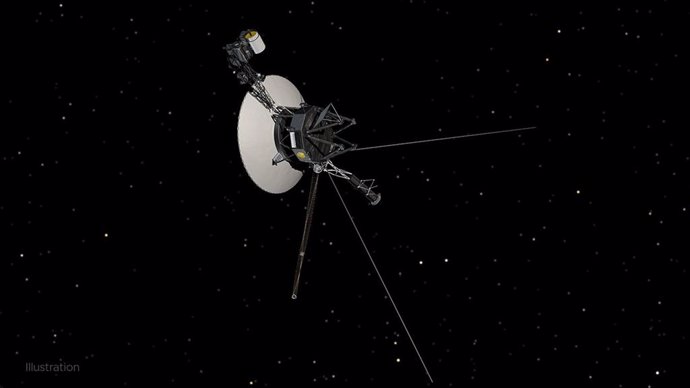File – NASA’s Voyager 1 spacecraft, shown in this illustration, has been exploring our solar system since 1977, along with its twin, Voyager 2. – NASA/JPL-CALTECH – Archive
September 5 () –
This September 5 marks 47 years since NASA launched Voyager 1 from Cape Canaveral in 1977, which became the first spacecraft to be launched in 2012. first ship to reach interstellar space.
The first spacecraft capable of diagnosing and solving problems on board, this 722-kilogram robotic probe, It is still operational today, continuing its extended mission of locating and studying the outer reaches of the solar system, including the Kuiper Belt and beyond, as well as exploring immediate interstellar space, until the end of its mission.
On August 25, 2012, at 122 astronomical units, the probe left the heliopause behindbeing the first to reach interstellar space.
Its original mission was to visit Jupiter and Saturn. It was the first probe to provide detailed images of the satellites of those planets.
TO a current distance of 164 astronomical units from the Sun (about 24.4 billion kilometers), according to NASA, it is the farthest spacecraft from Earth and the first to leave the Solar System. In December 2018, it was joined by its twin Voyager 2.
Voyager 1 has about 17,700 years left to leave the Oort Cloud, a spherical structure of trans-Neptunian objects almost one light-year from the Sun. It will enter it in about 300 years.
The veteran ship overcame in mid-2024 a problem that since November 2023 prevented it from sending readable science and engineering data and that could be solved from Earth.
Voyager 1 is currently the farthest human-made object from Earth, traveling at a greater relative velocity from Earth and the Sun than any other space probe. Even though its sister Voyager 2 was launched 16 days earlier, Voyager 2 will never overtake Voyager 1.
Nor did the New Horizons mission to Pluto and the Kuiper Belt, even though it was launched from Earth at a higher speed than the two Voyagers, because during the course of its journey, Voyager 1’s speed was increased due to assisted gravitational tugs. New Horizons’ current speed is greater than Voyager 1’s, but when New Horizons reaches the same distance from the Sun that Voyager 1 is now, its speed will be 13 km/s, as opposed to Voyager 1’s 17 km/s. Wikipedia reports.
Voyager 1 is on a hyperbolic trajectory, and has reached escape velocity, meaning that its orbit will not return to the inner solar system.
Both Voyager probes have exceeded their originally planned lifetimes. Each probe gets its electrical power from three RTGs (radioisotope thermoelectric generators) that are expected to be generating enough power to keep the probes afloat. in communication with Earth until at least 2025.





![[Img #74664]](https://thelatestnews.world/wp-content/uploads/2024/12/James-Watson-The-controversial-genius-behind-the-double-helix-150x150.jpg)







![[Img #74664]](https://thelatestnews.world/wp-content/uploads/2024/12/James-Watson-The-controversial-genius-behind-the-double-helix-300x200.jpg)


Add Comment